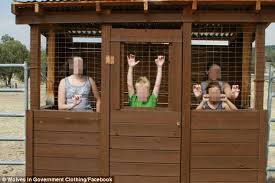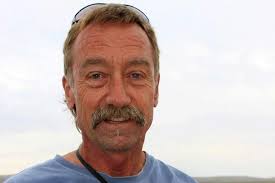
The reintroduction in 1998 of the Mexican Gray Wolf in New Mexico and Arizona has been controversial to say the least. There are those who praise the federal action and are rooting for the endangered species to make a full recovery. And there are those who see the wolf as a predator, threatening their livestock and rural way of life. The fear has driven some to put their children in special wolf-proof cages to wait for the school bus at the more remote stops.
For the past 20 years I have watched the conflict rage, the two sides digging in, littering the landscape with fear, insults, and righteous outrage. Always looking for the common ground, my mediator self has been pretty discouraged.

But there was one bright spot. Kevin Bixby, founder and executive director of the Southwest Environmental Center (SWEC) in Las Cruces, New Mexico, asked me to facilitate a workshop in Alpine, Arizona, near the border between the two states and epicenter of the wolf battle. As an environmentalist, he had a lot of nerve to even drive through Alpine, let alone convene a day-long workshop for local ranchers. I was fascinated. Why would any wolf-hating local give this guy the time of day?
Here’s why. Kevin offered these distressed ranchers and hunters a way to turn the threat into an economic boom. He had invited three eco-outfitters from Yellowstone to come and talk about the reintroduction of wolves in their backyard. They, too, had been scraping out a living ranching and hunting and knew the wolf would be the end for them and their families. But now, years later, they were making good money – better money – as eco-tourism guides. They told the Alpine crowd that their tours were full with tourists eager to hear stories about wolves, look for tracks and scat, and listen for howls as they huddled around the campfire. The wolf had become a business partner. Life was easier and income more reliable, and it was kind of fun taking these city slicker families around and giving them a real western adventure.
The locals listened intently and after the workshop hung around to get business cards and brochures from the speakers. I don’t know if any rancher actually morphed into an eco-tourism guide. But for me it was a beautiful example of how to build alliances. Kevin wanted to reduce the threats to the wolves: locals who wanted them dead. He realized that the issue looked different for him in his office in Las Cruces. Communities like Alpine were on the front line, on the ground, dealing with a formidable new four-legged neighbor. He also knew that any of his standard arguments about the importance of healthy ecosystems and the diversity of wildlife, and the rights of endangered species would only further inflame his opposition. So instead he imagined what they needed – some alternative economy – and offered an idea.
This is revolutionary in the conflict resolution world. How often, in the heat of battle, do you give up your own beloved arguments and think, “Hmm, what does my opponent need? Maybe if I help her out, she will help me out?” The risks are great. You may be run out of town. Your allies may call you a traitor for consorting with the enemy. You may have wasted precious time and resources. For Kevin the chance that even one rancher might respond was worth it. I admire him for that.

Since then, I have kept my eye on Kevin and in a recent conversation, he gave me hope again. He described an alliance that SWEC has formed with NM Comunidades en Acción y de Fé (CAFé) to address issues on the border with Mexico. The SWEC agenda is to protect habitat and corridors for wildlife. CAFé shares opposition to the administration’s approach but their focus is on the treatment of the undocumented, a path forward, protection for family members, and security for the Dreamers. They both oppose border militarization and barriers, increased patrols and check points.
Kevin describes SWEC’s history of opposing border barriers on behalf of wildlife, beginning with the Bush administration’s bill in the late 2000’s. “We didn’t get out of our silo for that one. We just made the ‘critically important natural resource’ argument, and the result was 350 miles of wall.” Over the next few years SWEC’s activities often overlapped with CAFé actions, and in 2017 the two organizations agreed to gather their forces for a visit to the office of Senator Martin Heinrich. The usual drill was for individual groups to lobby separately, meeting with a staff person. But this time it was a coalition that included not only SWEC and CAFé but also the ACLU Regional Center for Border Rights and the NM Wildlife Federation. The Senator took note and met with the coalition himself.

“He was impressed,” said Kevin. “Here were young teenage Dreamers and a bunch of old, white guys for wildlife all on the same page, pushing for reform on the border.” When another bill was before the Senate this April, SWEC sought out CAFé. The Dreamers opposed the bill in spite of its DACA fix, because it included full funding ($25 billion) for the administration’s border wall. Justice for one group cannot be at the expense of another, they explained. SWEC helped lobby the NM senators, both Democrats who voted against the bill.
The alliance with CAFé has broadened Kevin’s thinking. “A lot of nonprofit work is finding band-aid solutions to large systemic problems,” he said. He believes the larger systemic problem involves the dominance of money and the assumption that we are playing a zero sum game, where winners and losers are inevitable. The fix, he says, will require a shift in values toward social justice and a respect for the rights of all living beings, and this will only happen with a broad-based coalition.
Working together has been personally and professionally rewarding. The two movements have learned to respect and value each other’s agendas and struggles. Kevin especially values the faith-based approach of CAFé and believes that environmental activists would be wise to work in that context focusing on the moral and ethical aspects of their work. The role of science and facts can only go so far, he says; joining with religious leaders not only adds new supporters for the movement but gives environmentalists access to the spiritual and emotional aspects of their own work.
Membership in the coalition is growing as other border activist groups and environmental organizations join. This can bring organizational challenges. I asked Kevin about the coalition’s structure and leadership, curious about their own internal process of decision-making. He hesitated and then admitted that they were too busy reacting to emergencies to think long-term. Their actions — panel discussions, rallies, and joint lobbying trips to DC – have been spontaneous, suggested by one entity or another.
“We need to be more intentional,” he mused. “We’re just always reacting to a crisis. We need to sit down and think about the ideal immigration and conservation strategy for the coalition.” That would probably be a good idea, but I hope that Kevin and his allies realize that they have achieved perhaps the hardest part of forming a coalition. They have learned about each other’s needs, found common ground, and demonstrated support in times of need. Anyone can draft a strategic plan, but developing those trusting relationships based on mutual caring – that is something special.

For more about SWEC: https://www.wildmesquite.org/
For more about CAFé: @OrganizeNM

So glad to hear about these coalitions. Hope they can figure out how to work for the best interests of all. Thanks for sharing!
Good to hear from you, Elaine. Another mediator on the front lines!
Very timely message that applies to a talk I will be giving with regard to collaborative problem solving next Tuesday to the American Institute of Professional Geologists’ annual meeting. It is a subject now referred to as social licensing. For years the mineral/energy industry has avoided this process, but is now becoming aware of its value. Thank you for sharing.
Let me know how the meeting goes, and thanks for carrying the message to this key group.
Thanks for this great post Lucy! Inspiring stories like this give me hope. Please thank Kevin for his work the next time your paths cross.
Thanks, Jake, will do.
What a great, and inspiring post, Lucy. Thanks for sharing the work of Kevin and his colleagues.
Thanks, Joanna. Always good to hear from you!